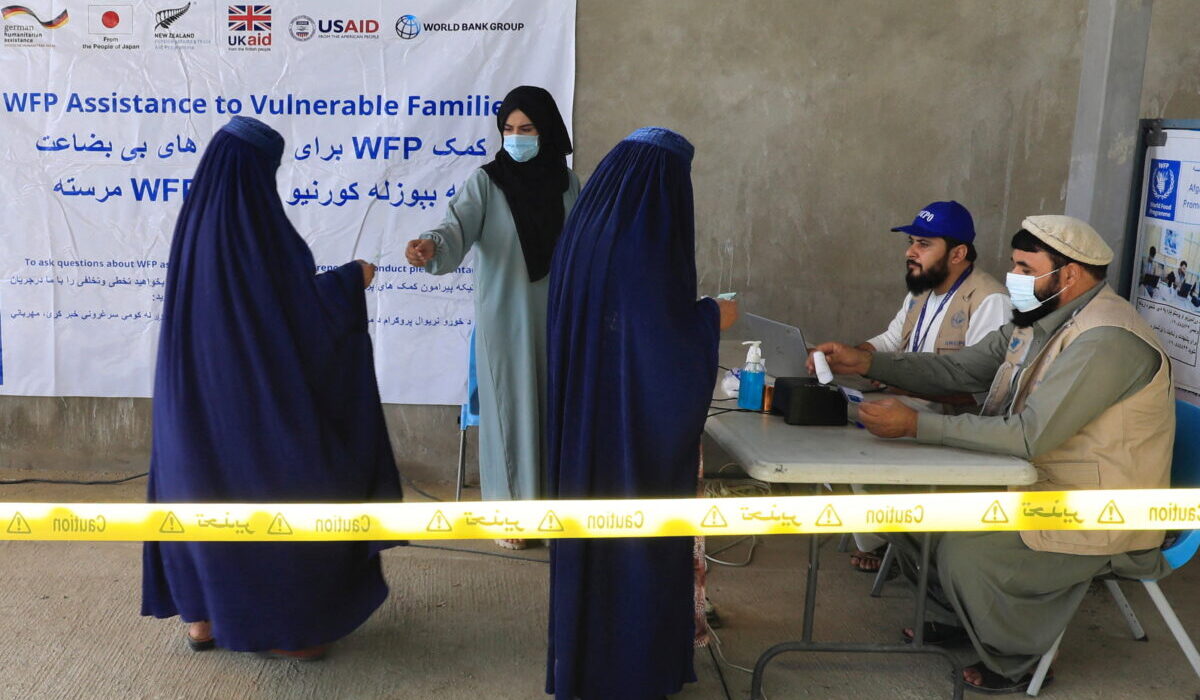KABUL, Afghanistan — One in four families across the country does not have enough to eat, and three-quarters are burdened with debt as they struggle to feed their loved ones, according to the World Food Program (WFP).
Years of economic collapse following the Taliban’s return to power in 2021, compounded by a funding crisis for humanitarian aid, have left many Afghans relying on small jobs or borrowing to scrape by, WFP said.
The organization warns that most families who depend on its assistance will receive little or no support in the coming months due to a massive shortfall in resources.
Lives on the brink
Said Mir, 30, pushes a wheelbarrow through the streets of Wazir Akbar Khan, a Kabul neighborhood once home to embassies now shuttered. For a small fee, he helps customers carry shopping bags, but his wheelbarrow remains empty most mornings.
Before Afghanistan’s economy collapsed, he worked in construction, earning enough to support his wife and daughter. After losing his job, he went to Iran, where he found work as a security guard and sent money home. But when Iranian authorities cracked down on Afghan migrants, he was forced to return.
Now, he lives with his mother and brother in a rented house, constantly struggling to make the $45 monthly rent. His wife left, taking their daughter, when he could no longer provide for them. “I miss them so much,” he said, wiping away tears.
Across Kabul, other families share similar stories of desperation. In Khwaja Rawash, brothers Emran, 14, and Sulaiman, 12, earn just $1.50 a day washing cars in the cold, money that supplements their father’s income as an unlicensed taxi driver. Both boys have had to leave school to support their family.
“I missed my exams and failed this year,” said Emran, who had been in ninth grade. Still, he dreams of returning to school and one day becoming a teacher.
For Mir Akbar, 35, who washes cars in the Shar-e-Naw neighborhood, daily survival is a constant grind. What he earns each day pays for dinner that night and breakfast the next morning. During harsh winters, he struggles to keep his house warm and provide for his wife and five children.
“Winter is always difficult for us,” he said. “When my children get sick, I try to buy a kilo of gas to heat the house, but it only lasts a few days.”
A funding crisis
The WFP, which scaled up food aid in 2021 and 2022 to avert a humanitarian catastrophe, has been forced to cut back. In the first half of 2024, it reached only one million people monthly with life-saving food assistance, leaving 11 million in need.
Afghan families now owe an average of $560 in debts accrued primarily for food, and rural households face even higher levels of borrowing.
Sulaiman, 23, sells cauliflowers from a small truck in Kabul’s Arzan Qimat area. He works 12-hour shifts for $3 a day, but the money is barely enough to care for his ailing mother, who suffers from heart disease.
“Last year was tough, and this year I am not prepared for winter,” he said, standing near his truck, which does not even belong to him.
The WFP says it urgently needs $680 million to support vulnerable Afghan families during the next six months, particularly as winter looms. Without additional funding, millions will be left without food during the country’s harshest months.





